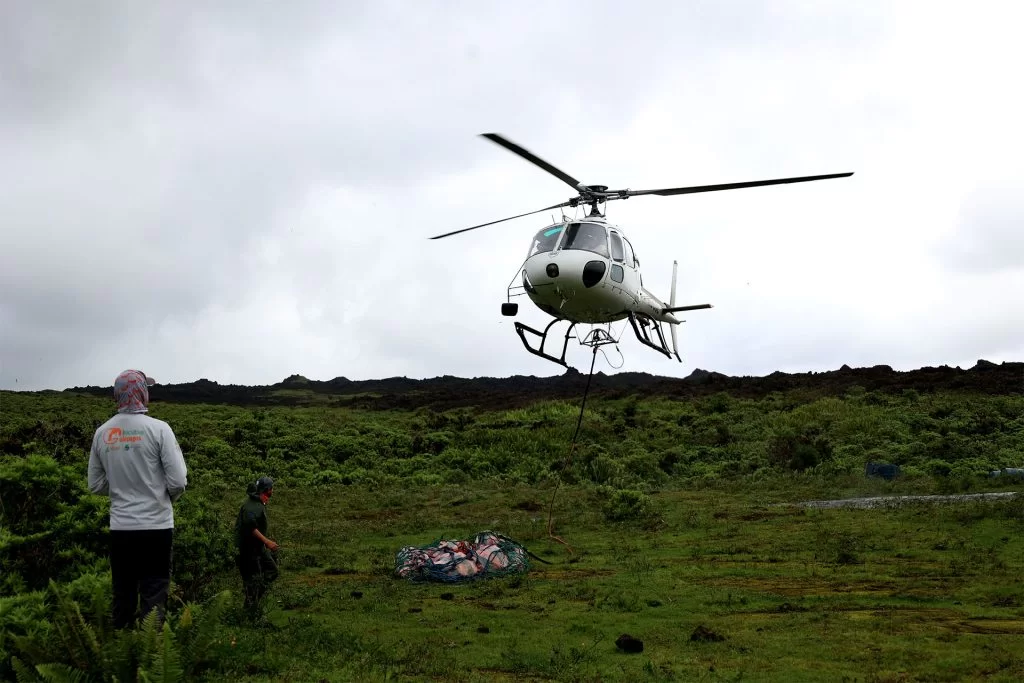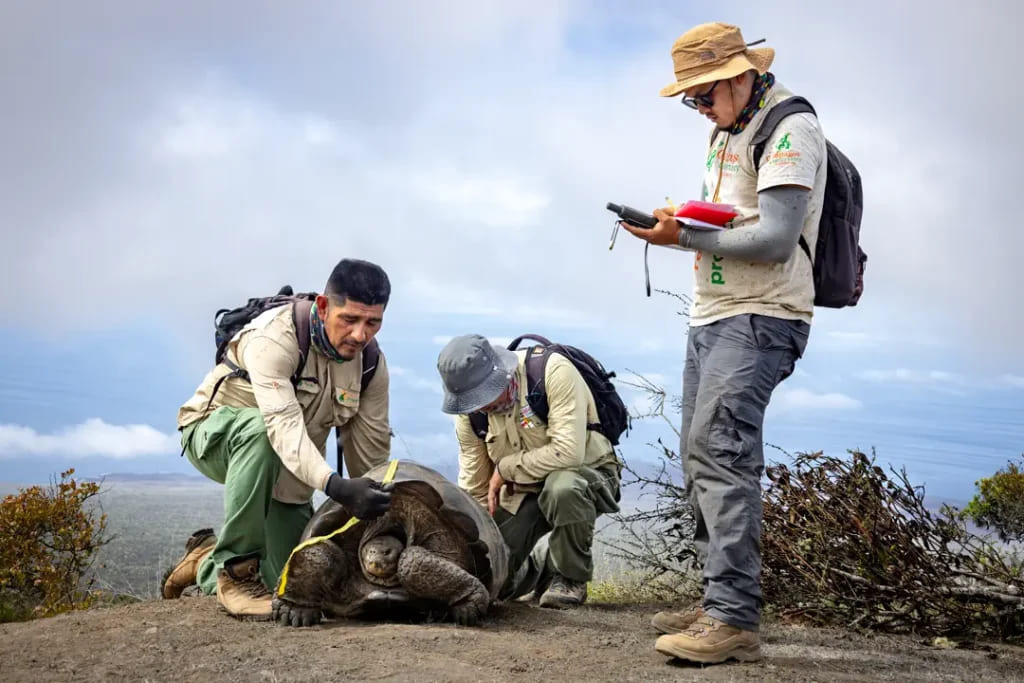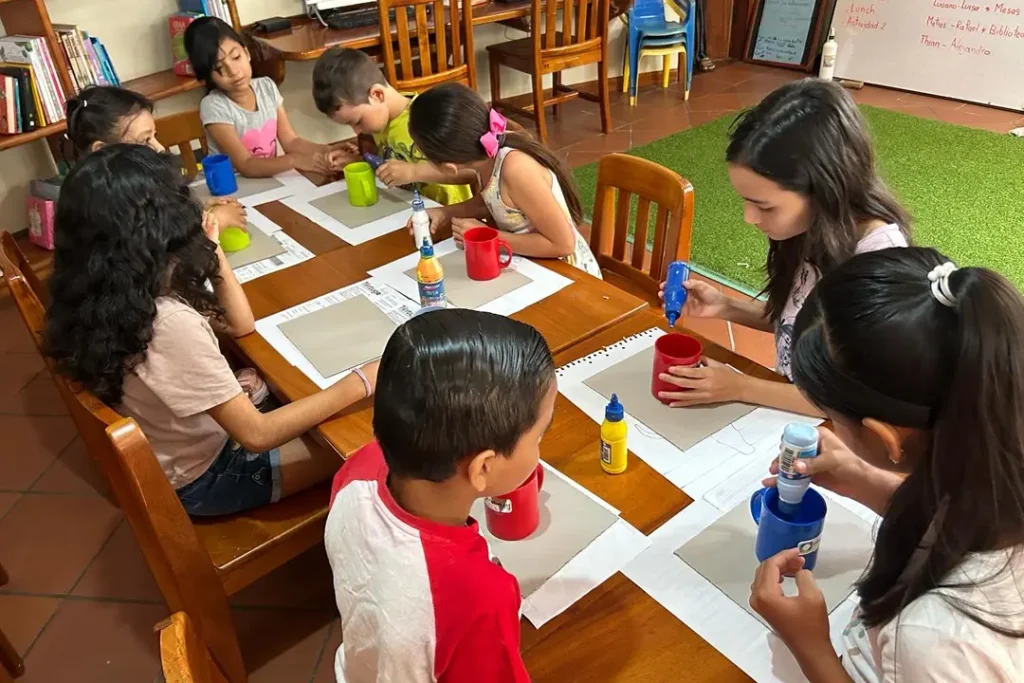The Remarkable Return Of 136 Galapagos Tortoises To Their Natural Habitat
In partnership with Galapagos Conservancy and the Galapagos National Park Directorate 136 juvenile tortoises were successfully returned to the Cinco Cerros region on Isabela Island’s Cerro Azul Volcano. These tortoises were aged between 5 to 9 years and returned to their habitat. This is the only place in which populations of Sierra Negra volcano and Cerro Azul coexist.
The Breeding Center and the Natural State
The journey begins on Isabela Island at the Arnaldo Tupiza Breeding and Rearing Center for Chamaidan, where park rangers are dedicated to their development and well-being.
The tortoises are in the best possible condition to embark on their exciting journey home to enjoy life in its natural state. After being quarantined and dewormed as well as analyzed for their health and microchip-marked for identification, 136 turtles were transported by helicopter to the idyllic south of Isabela Island.
Aerial Support in Conservation
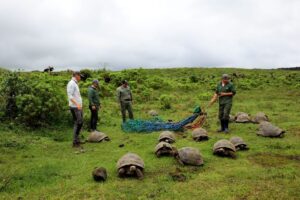
©Galápagos Conservancy
Financial support from passionate conservationists made it possible for us to transport these tortoises safely via helicopter. This is an important tool that has increased our capacity to move this species. The only other option would have been to move them by sea, and then on shoulders over several kilometers of challenging terrain and lava fields. It would be a very difficult task, which would require multiple expeditions and a lot of time. Your contributions have been crucial in helping us overcome these challenges and ensure the success of our conservation program.
Repatriation of turtles to Isabela Island is crucial in restoring ecological balance. Tortoises, which are herbivores in their natural habitat, actively contribute to the shaping of the landscape and the dispersal of seeds. These factors are vital in maintaining ecosystem stability. Dr. Jorge Carrion is our Director of Conservation and he stressed that we must remain vigilant as this species faces a threat from invasive species. We will therefore continue to monitor the situation closely.
The Future of the Tortoise Juveniles through Successful Re-introduction
This repatriation marks an important milestone in the conservation efforts in Galapagos. Our donors’ generosity and the collaboration between Galapagos National Park Directorate, Galapagos Conservancy and the Galapagos Conservancy have played a vital role in overcoming logistical obstacles and ensuring safe helicopter transportation of this valuable species.
This achievement highlights the importance of being vigilant against any threats to biodiversity. We want to thank all of the conservationists who actively supported this campaign. Your commitment and financial support is essential to ensuring a safe and balanced future for giant tortoises in Galapagos.
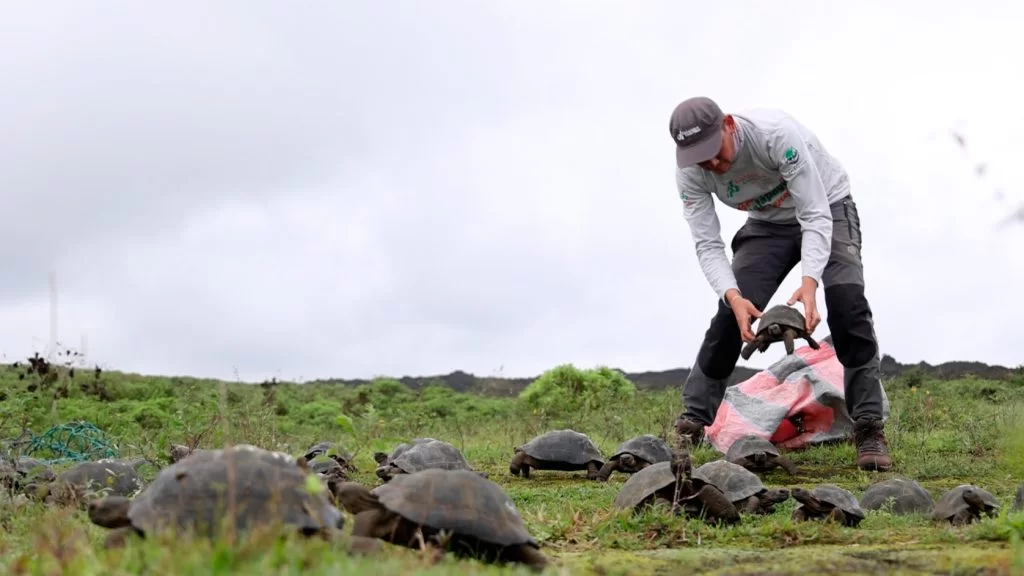
©Galápagos Conservancy
